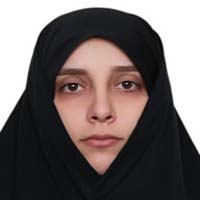Design of urban furniture on Enghelab street in order to adapt for the disabled people (between Ferdowsi Square and Tehran Welfare Organization)
Any improvement and renovation that takes place in the city must be according to the needs of human beings. Paying attention to the demands of all sections of society in the city requires proper and comprehensive planning. Urban planning must meet the needs of all citizens, especially the part of society that is in the minority or forgotten. Urban furniture is one of the essential elements in the public space that should be adapted for use by all people, especially the disabled. Unfortunately, less attention has been paid to this aim issue in Iran. People with disabilities include disabilities, the elderly, children, and pregnant women. In this regard, the purpose of this study is to provide the proposed design and criteria for the adaptation of urban furniture for the use of disabled people. For this purpose, after studying library resources and upstream projects, people with disabilities and their needs have been identified. In this study, to prioritize important urban furniture, a questionnaire was distributed among experts on the distribution and design of urban furniture based on the results of priorities. This furniture includes a bench, telephone booth, standing information boards, bus station, and drinking fountain. Then, according to the principles of the user-centered design method, the design of urban furniture is discussed. In the first stage of this method, users are identified, the environment of use and the problems of existing furniture are extracted. The axis studied in this research is Enghelab Street, between Ferdowsi Square and the location of the Welfare Organization of Tehran, with a length of 1.1 km. Problems in this axis include lack of adaptation for people with disabilities, inappropriate materials, improper location, lack of ramps and elevators in transportation stations, lack of smartphones, lack of audible alarms, lack of drinking fountain in the street. In the second stage, the design needs and requirements are explained. In this stage, first, the axis of knowledge and its problems for the use of people with disabilities are discussed. Then the needs and requirements in the design of urban furniture are examined. To use and easily accessible urban furniture for people with disabilities, including people with disabilities, children, pregnant women, and the elderly, these elements must be adapted. In the third stage, the proposed design and criteria for urban furniture for the use of people with disabilities are discussed. To adjustment urban furniture with disabled, due to their weakness and disability, the following points should be considered in designing urban furniture: Bench: backrest and canopy, providing handles and handles in the maximum possible places to facilitate the sitting of the disabled and easy to get up from the bench, providing a place for the disabled and wheelchair users, providing support for the elderly and disabled who can sit Do not have but need temporary rest, proper location, Telephone booths: general standards that make the device available to the public, special considerations for the use of specific users, including the disabled, the elderly and the like, appropriate height and width, proper location and distribution, use of the line Braille and audible alarms, Information boards: Enough light for night vision, use of appropriate and legible colors, use of braille, clock display, signposts for access to public places and access to public transportation, audiotape and motion sensor to guide people with disabilities, Bus stations: There are mosaics for the blind, wheelchairs, benches for children and adults, signboards for the use of wheelchairs, Braille signs for the blind, appropriate colors and materials, trash cans for the disabled Handrails for the disabled; Drinking: use of durable and durable materials, considering the types of people with disabilities, access using mosaics for the blind, appropriate height, allocating space for wheelchairs; In the fourth stage, the proposed designs are evaluated. In this regard, a questionnaire was designed and provided to 50 experts and thinkers. The results of appraising the proposed designs show that the designs made in the three sections of design and fit, location and readability, and safety, according to experts, are very suitable for use by people with disabilities. As a result, relevant indicators and guidelines should be used to make efficient adjustments. in designing urban furniture, all kinds of disabilities should be considered, including physical disabilities, sensory disabilities, children with disabilities, pregnant women, and the elderly. In this research, an attempt has been made to design furniture that is important from the point of view of specialists and experts, benches, telephone booths, bus stations, drinking fountains and information boards, and their proper location in the study axis. Tehran is essential for people with disabilities.
- حق عضویت دریافتی صرف حمایت از نشریات عضو و نگهداری، تکمیل و توسعه مگیران میشود.
- پرداخت حق اشتراک و دانلود مقالات اجازه بازنشر آن در سایر رسانههای چاپی و دیجیتال را به کاربر نمیدهد.



